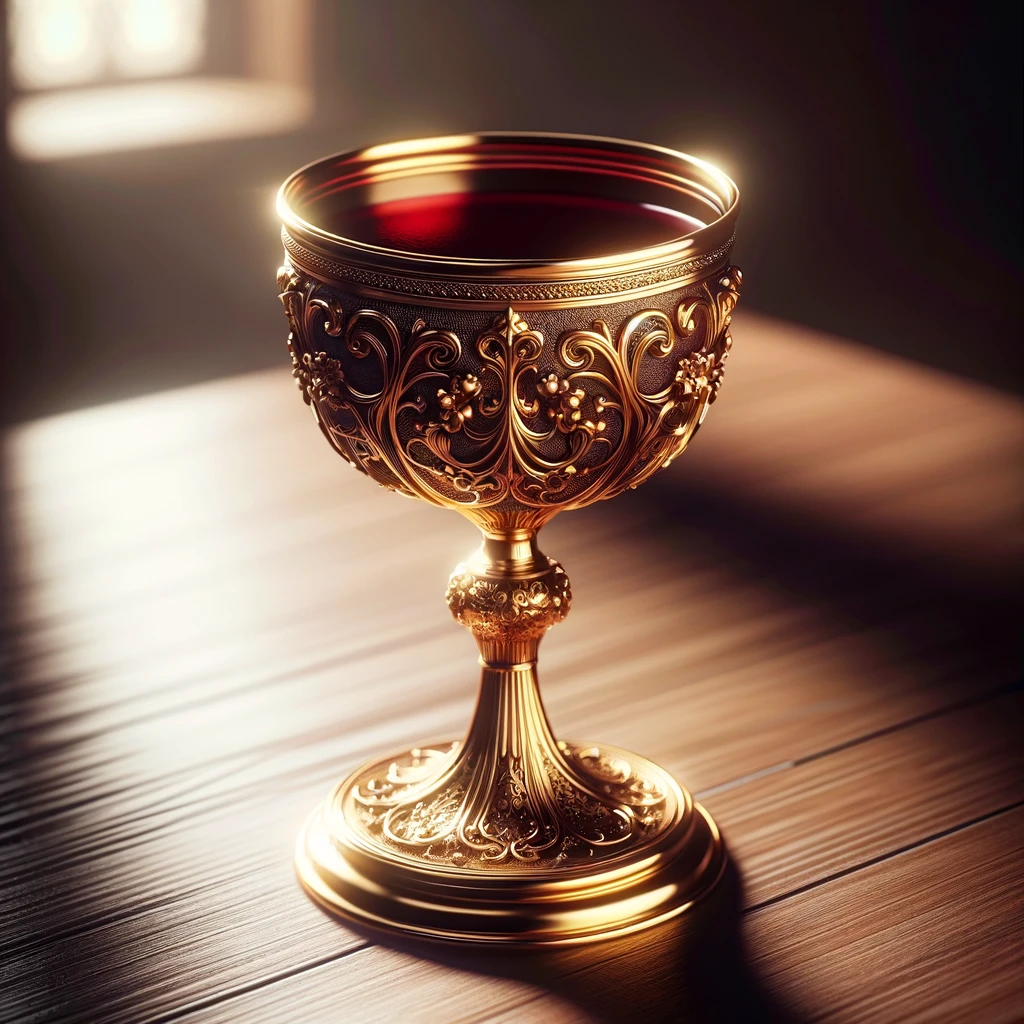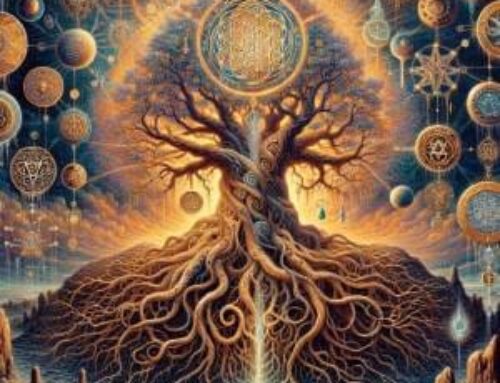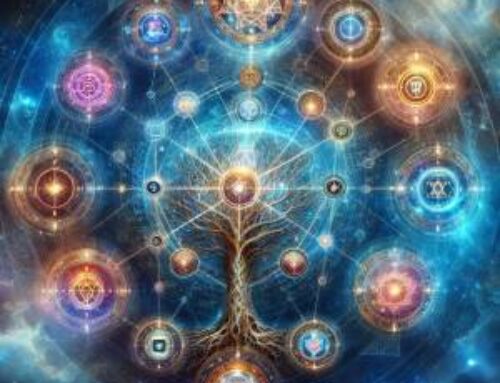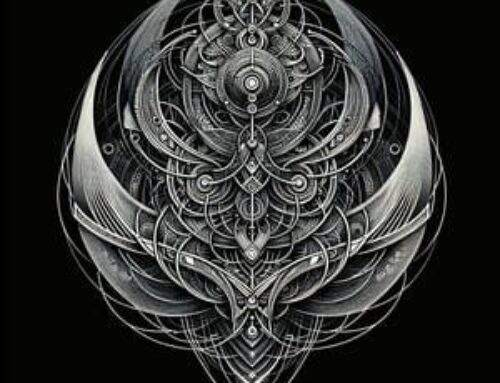Contents
- 1 Introduction
- 1.1 The Eucharist: A Central Rite of Christian Worship
- 1.2 Jesus and the Old Testament: Upholding Ancient Traditions
- 1.3 The Familial Roots of Christian Rituals
- 1.4 Theological Significance of the Eucharist
- 1.5 Historical Development of the Eucharist
- 1.6 Connection to Passover Seder
- 1.7 The Eucharist Ritual: Ideal vs. Reality
- 1.8 The Universal Resonance of the Eucharist Ritual
Introduction
The Eucharist: A Central Rite of Christian Worship
The Eucharist, also known as Holy Communion or the Lord’s Supper, stands as one of the most sacred rituals in Christian worship. Rooted in the final meal Jesus shared with his disciples, it symbolizes the new covenant between God and humanity through Christ’s sacrifice. Across various Christian denominations, the Eucharist is celebrated with deep reverence, embodying themes of redemption, unity, and divine grace. This ritual, involving the sharing of bread and wine, is a profound expression of faith, commemorating Jesus’ sacrifice and his teachings of love and fellowship.
Jesus and the Old Testament: Upholding Ancient Traditions
Contrary to the common perception of Jesus as the founder of a new religion, his life and teachings were deeply entrenched in the traditions and commandments of the Old Testament. Jesus, a Jewish rabbi, observed Jewish law and customs, and his teachings often referenced and reinforced the scriptures of the Hebrew Bible.
The Last Supper, which laid the foundation for the Eucharist, was in fact a Passover Seder – a ritual meal steeped in Jewish tradition, commemorating the Israelites’ liberation from Egyptian bondage. This pivotal event in the life of Jesus highlights the continuity of his ministry with the Jewish faith, underscoring that his intention was not to abolish the old but to fulfill and illuminate it with a deeper spiritual understanding.

The Familial Roots of Christian Rituals
In exploring the rituals of Christianity today, we find that many are, in essence, adaptations of family feasts and practices from the Old Testament. These ancient Jewish customs were predominantly family-centered events, emphasizing the role of the family unit in spiritual observance and ritual enactment.
In the Old Testament, significant religious observances were often carried out within the home, with the head of the family typically leading the rituals. These were intimate gatherings, steeped in religious tradition but devoid of a formal priestly presence. For instance, the Passover Seder, a ritual meal commemorating the Israelites’ escape from Egypt, was traditionally conducted by families in their homes. This practice highlights the principle that each household was, in itself, a sanctuary of faith and worship.
This familial aspect of ritual observance profoundly influenced early Christian practices. Many of the rituals that we now associate with church settings originally had their roots in simple, family-based ceremonies. The Eucharist, for instance, emerged from the Last Supper, which Jesus shared with his disciples – a gathering that mirrored the familial structure of Jewish feasts.
Over time, as Christianity developed its distinct identity and ecclesiastical hierarchy, the execution of these rituals gradually shifted from the family to the church. However, the essence of these practices still reflects their familial, Old Testament origins.
Theological Significance of the Eucharist
Understanding the Eucharist in Christian Belief
The Eucharist, a sacred ritual involving bread and wine, holds a special place in Christian hearts. It’s more than just a ritual; for many, it’s a powerful symbol of Jesus’ love and sacrifice. When Christians share the Eucharist, they remember Jesus’ last meal with his disciples and feel connected to him.
Different Christian groups see the Eucharist in their own way. Catholics believe that the bread and wine truly become Jesus’ body and blood, a belief called transubstantiation. Many Protestant churches view the Eucharist as a symbolic act that brings believers together and reminds them of Jesus’ teachings. The Orthodox Church sees it as a mystery, a way to experience a spiritual connection with God.
The Eucharist in the Bible and Its Jewish Roots
The New Testament, particularly in the stories of the Last Supper in the Gospels and in Paul’s letters, talks a lot about the Eucharist. These parts of the Bible show us how Jesus started this tradition and why it’s so meaningful.
What’s really interesting is how this Christian ritual connects back to Jewish traditions, like the Passover. Remember, Jesus’ Last Supper was a Passover meal. This link reminds us that Jesus wasn’t trying to start a whole new religion; he was bringing new meaning to the traditions he grew up with. The Eucharist is a beautiful way to see how Christian practices have deep roots in Jewish history.
Historical Development of the Eucharist
Early Christian Practice
In the early days of Christianity, the Eucharist was a simple, intimate affair, much like the family gatherings in Jewish tradition. Early Christians would meet in homes, not grand churches, to share bread and wine in remembrance of Jesus’ Last Supper. This practice was deeply rooted in the Jewish custom of breaking bread together during religious observances, like the Passover.
These early Eucharist gatherings were about community and remembering Jesus’ teachings. They followed his example from the Last Supper, which was, in itself, a Jewish Passover meal. This connection shows how early Christians saw themselves as continuing the religious traditions Jesus had been a part of.
Evolution Over Centuries
As Christianity grew and spread across different cultures and regions, the way the Eucharist was practiced began to change. From simple home gatherings, it evolved into a more formal part of church services, with specific rituals and ceremonies.
Over time, the understanding and interpretation of the Eucharist also evolved. The Catholic Church developed the idea of transubstantiation, where the bread and wine are believed to become the actual body and blood of Christ. Meanwhile, various Protestant denominations formed their own views, seeing the Eucharist more as a symbolic remembrance.
Connection to Passover Seder
Origins in Pesach
The Last Supper, which Jesus shared with his disciples and during which he instituted the Eucharist, was not just any meal; it was a Passover Seder. The Passover, or Pesach in Hebrew, is a significant Jewish festival that commemorates the Israelites’ liberation from Egyptian slavery. It’s marked by the Seder, a special meal full of symbolism and ritual.
At the Last Supper, Jesus and his disciples were observing this traditional Jewish feast. This event was deeply rooted in the Jewish practice and culture that Jesus was a part of. By understanding this, we can see the Eucharist as a continuation and reinterpretation of an ancient Jewish tradition.
Symbolic Parallels
The Passover Seder is rich with symbols, many of which find echoes in the Eucharist. For example, the unleavened bread (matzah) used in the Seder is a symbol of the haste with which the Israelites left Egypt, having no time to let their bread rise. In the Eucharist, the bread symbolizes Jesus’ body, given for the salvation of humanity.
Wine, another central element in both the Seder and the Eucharist, represents joy and celebration in the Jewish tradition. In the Christian context, it symbolizes the blood of Christ, shed for the forgiveness of sins.
These parallels show how the Eucharist, while a distinctly Christian ritual, carries forward and transforms the meanings of ancient Jewish symbols.
The Eucharist Ritual: Ideal vs. Reality
The Theoretical Depth of the Eucharist
In theory, the Eucharist ritual is a profound transformative experience. It begins with the preparation and consecration of bread and wine, echoing the sacred practices of the Passover Seder. This moment is intended to be a symbolic reenactment of Jesus’ Last Supper, with the priest’s words meant to transcend mere recitation and embody a deeper spiritual reality.
The climax of the ritual, Communion, is where the congregation partakes of the bread and wine. Ideally, this act is not just a ritualistic sharing but a deep spiritual communion, reminiscent of the unity and sacredness of the Seder meal.
The Reality in Many Churches
However, the reality in many contemporary church settings can be markedly different. The transformative potential of the Eucharist often hinges on the spiritual stature of the priest. The concept of an enlightened priest, one embodying a Messiah-like consciousness, is central to realizing the Eucharist’s full spiritual impact. Such a figure would elevate the ritual from a routine practice to a truly sacred encounter.
Yet, in many churches, this level of spiritual enlightenment in leadership is not commonly observed. The rituals, including the Eucharist, can sometimes lean more towards the ceremonial and routine, lacking the depth and transformative power they are theorized to possess. This gap between the ideal and the actual experience can leave the Eucharist feeling more like a traditional practice than a profound spiritual engagement.
The Challenge of Bridging the Gap
This discrepancy poses a challenge for many believers seeking deeper spiritual experiences in their religious practices. The Eucharist, while holding immense potential as a conduit for transformation and enlightenment, often requires a level of spiritual leadership and community engagement that goes beyond the ordinary. Recognizing this gap is crucial in understanding the diverse experiences and expressions of the Eucharist in Christian communities today.
The Universal Resonance of the Eucharist Ritual
Eucharist Elements in Broader Spiritual Contexts
The bread and wine used in the Eucharist hold a special place in Christian worship, symbolizing the body and blood of Christ. However, these elements also carry universal symbolic meanings, echoing rituals and traditions beyond Christianity. For instance, in the story of Abraham and Melchizedek in the Old Testament, bread and wine are shared as a token of spiritual kinship and blessing.
In various mystery traditions, these elements often represent the interconnectedness of life, transformation, and the cycle of nature. They are used symbolically to denote themes of sacrifice, rebirth, and spiritual nourishment — concepts that are central to many spiritual paths.
Ritual Process: Echoing Universal Themes
The Eucharist ritual, while distinct in its Christian form and significance, shares several commonalities with broader religious practices:
- Gathering and Preparation: This phase resonates with the communal aspect found in many spiritual traditions, where gathering as a community creates a collective sacred space.
- Reading and Sermon: The practice of sharing wisdom, teachings, and sacred narratives is a universal feature in religious rituals, serving to connect practitioners with their spiritual heritage.
- Consecration: The act of blessing bread and wine transcends Christian practice. It’s a ritual found across various cultures, often symbolizing the transformation of ordinary elements into sacred offerings.
- Communion: Sharing sacred elements in a ritual setting is a common motif in many mystery traditions. It embodies unity, shared spiritual journey, and the communal partaking of divine blessings.
The Eucharist, therefore, while deeply rooted in Christian theology and history, also participates in a broader tapestry of spiritual symbolism and ritual practice. Understanding these universal resonances enriches the appreciation of the Eucharist, highlighting its place within the wider world of spiritual and religious expression.
If your journey through the realms of ritualism has stirred a deeper curiosity about connecting with higher spiritual realities, the Hermetic Academy awaits your exploration. Here, you can delve into practices and teachings that offer genuine connections with the higher worlds, promising real transformative effects on your spiritual path.
Embrace this opportunity to transform your theoretical knowledge of ritualism into a practical, experiential journey. Discover the means to not just understand but truly experience the connection with the higher worlds. Subscribe to the Hermetic Academy today and take the first step towards a deeply impactful spiritual journey.





